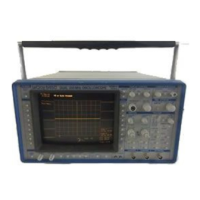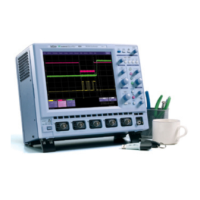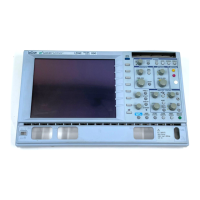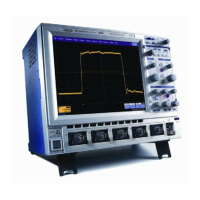SECTION 7
REMOTE OPERATIONS
7.1
Progr.mmed Control
Most of the front panel and internal functions of the 9400A can be
remotely controlled using a set of high-level, English-like commands
and mnemonics. For example, a command followed by <?> tells the scope
to transfer to the host computer the value of the control setting
defined by the command. It is thus possible to read the complete status
of the instrument by repeated queries. It is also possible to save the
entire status of the instrument in binary format with a single command.
The 9400A’s remote control facility allows complex measurement
procedures and instrument setups, a particularly useful feature in
experimental and automated testing environments.
The 9400A can be programmed via the rear panel RS-232-C port interfaced
with a computer terminal or a computer. Remote control is also possible
via GPIB (IEEE-488 bus) if the 9400A has been fitted with the option
OP02. In this case data transfer rates are relatively faster.
To help users who wish to remotely control the Models 9400 (125 MHz
bandwidth) and 9400A (175 MHz bandwidth) oscilloscopes, LeCroy have
published the following application notes which are available on
request:
ITI 002: Linking the LeCroy 9400 to an IBM
R
PC-AT via the RS-232-C
Asynchronous Interface.
ITI 005: Linking the LeCroy 9400 to an IBM PC-AT via GPIB.
ITI 006: Linking the LeCroy 9400 to an HP 9000 Model 216 controller.
7.2 RS-232-C Ports (56 and 57)
The 9400A has two RS-232-C ports. One is available for computer or
terminal controlled oscilloscope operation, the other for plotter
interfacing. The RS-232-C ports provide an asynchronous data transfer
rate of up to 19,200 baud.
7-1
Remote Operations

